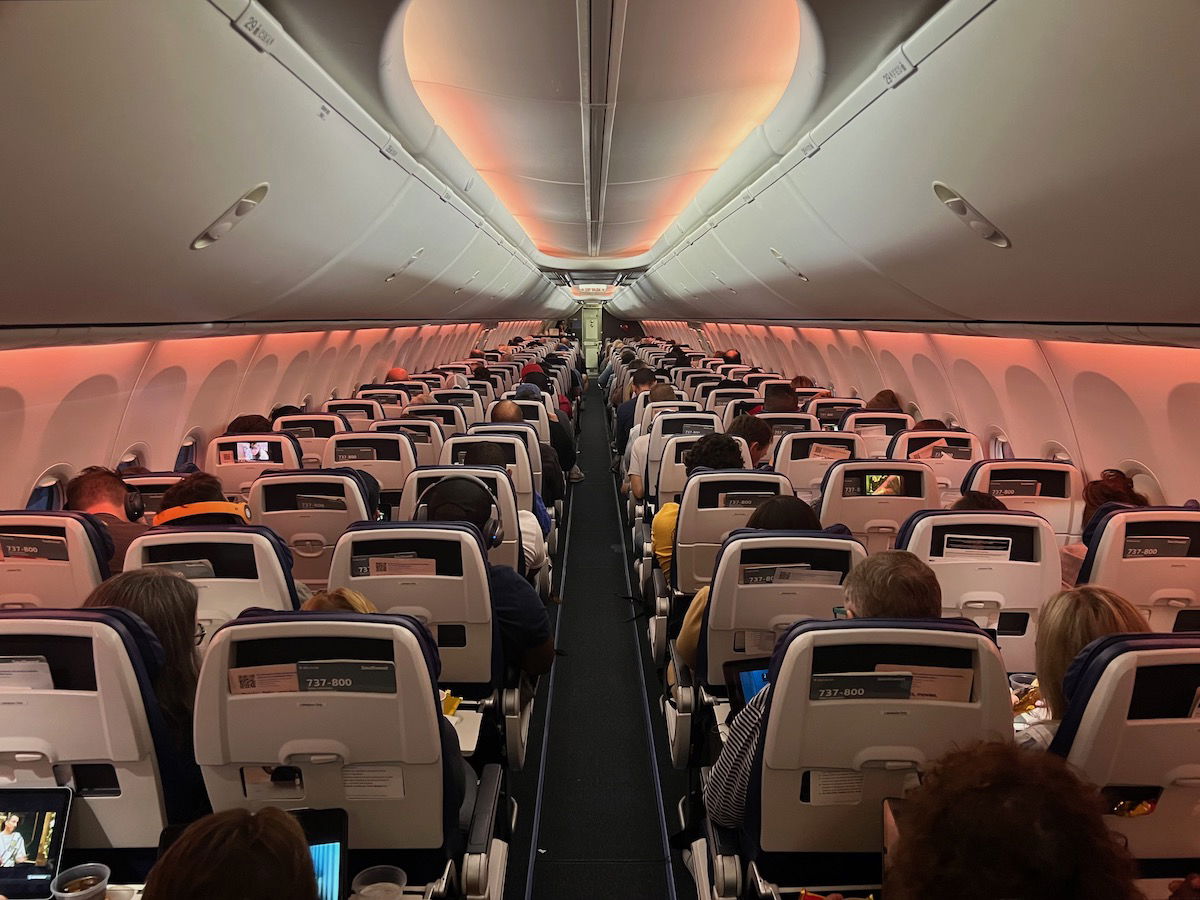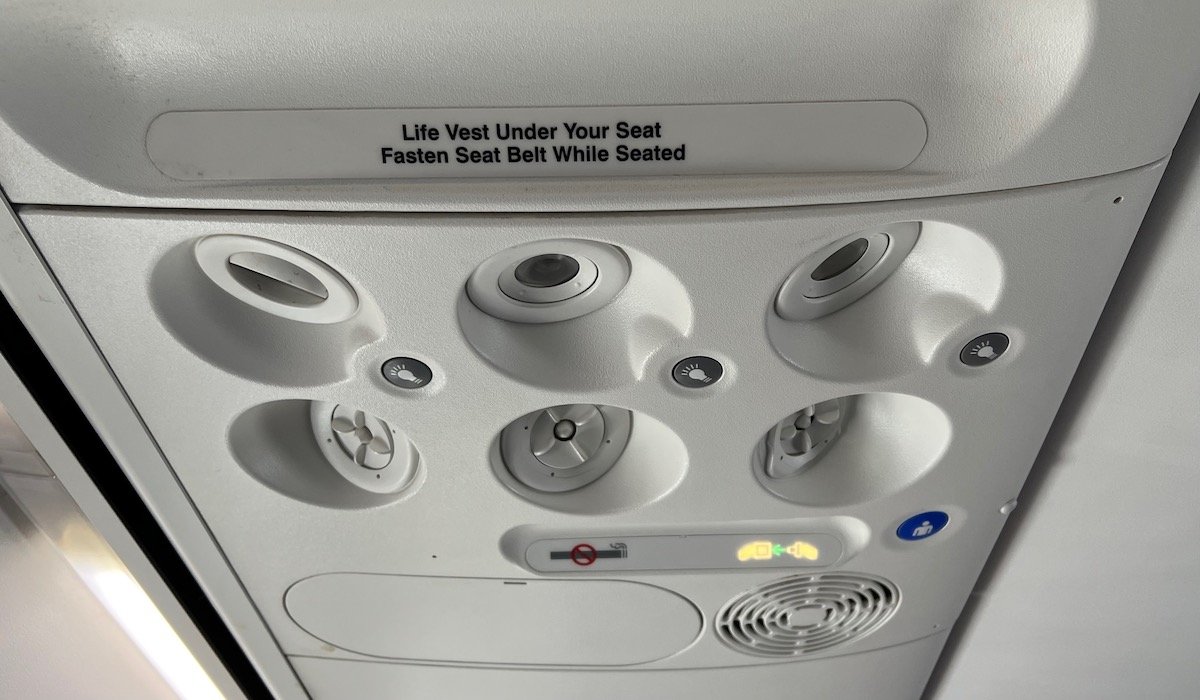Starting next week, Southwest Airlines passengers will notice a subtle change to when crews prepare the cabin for landing, and it has some implications for passengers.
In this post:
Southwest crews will prepare cabin for landing earlier
As is standard on virtually every airline, flight attendants prepare the cabin for landing at some point prior to arrival. This includes suspending inflight service, having passengers store their belongings (including laptops), and asking passengers to put their seats and tray tables in the upright position.
As of December 4, 2024, Southwest Airlines will be instructing crews to prepare the cabin for landing earlier than before, as flagged by View from the Wing. When this new procedure is implemented, here’s what will happen:
- At the top of descent, pilots will make an announcement, informing the flight attendants that the descent phase of the flight has begun
- When descending through 18,000 feet, the pilots will make one high-low chime, indicating the start of the sterile flight deck; this is the cue for flight attendants to prepare the cabin for landing, and be seated in their jump seats
Previously, Southwest crews prepared the cabin for landing when descending through 10,000 feet, so that procedure will start 8,000 feet higher. While it will vary depending on a flight’s descent profile, you can expect that this will typically translate to the cabin being prepared for landing roughly five minutes earlier than before.
As you probably guessed, this means that passengers will have less time to use their laptops, and crews will also have less time to perform service. This shouldn’t impact service on longer flights, though on very short flights with a drink service, this could limit the crew’s ability to perform a full service.

Why Southwest is changing its cabin preparation policy
Why are we seeing this policy change at Southwest Airlines? Well, the decision was made in consultation with TWU 556, the union representing flight attendants. The airline claims that this policy change reflects years of research, plus reports through the carrier’s safety management system.
Based on thousands of data points from flight attendants and pilots, paired with information from the flight data analysis program, the belief is that this policy change will reduce flight attendant injuries by at least 20%.
While turbulence can happen at any altitude, there’s of course a greater risk at a lower altitude, when it’s more common to encounter turbulence, and to fly through thick clouds.
Reducing injuries is of course a logical and fair objective. I’d be curious to know what the total number of injuries among flight attendants during the descent phase is, and how many of those are considered serious. Yes, stuff happens, but we’re talking about 20% of what number?
Southwest isn’t the first major US airline to make this change, as United Airlines has a similar policy, which was implemented last year. However, as far as I know, other US carriers make final preparations at 10,000 feet. It’s also common among many foreign carriers to prepare the cabin for landing as soon as the descent starts.

Bottom line
Southwest Airlines crews will shortly start preparing cabins for landing at 18,000 feet, rather than at 10,000 feet. This is intended to reduce injuries among flight attendants, given the increased risk of turbulence at low altitudes. This is fairly minor, but passengers may still notice this policy change, as it will impact seat recline, laptop use, etc.
What do you make of Southwest changing its cabin landing procedures?





Sitting on a Delta flight to LGA and was just told to put seat back up an hour before landing.
First world problems - but come on.
This is 100% laziness pushed on the flying public by lazy union members. I'll avoid Southwest in the future. With fewer customers they can sit down and look at their phones for longer.
So, no service in the state of Hawaii? That'll be good for competing with HA.
Keep letting the union run Southwest into the ground!
As a 45 year flight attendant, the ride can and does become bumpy at that lower altitude upon descent and can be challenging passing through the cabin preparing for arrival. Not aware of a lot of injuries during that time in flight, but the potential is definitely there.
Absolutely. Some interesting stumbles buttoning up the cabin
Safety First!!!
As a retired flight attendant, I believe that the "safety first" approach most airlines embrace for their passengers should apply to their crew members as well. Especially for flight attendants who work for regional airlines & airlines who fly "short hops." Some flights never get above the turbulence zone of 10,000 to 14,000 feet. This can make food & drink services very bumpy. Flight attendants & their 200 pound carts can get tossed around with...
As a retired flight attendant, I believe that the "safety first" approach most airlines embrace for their passengers should apply to their crew members as well. Especially for flight attendants who work for regional airlines & airlines who fly "short hops." Some flights never get above the turbulence zone of 10,000 to 14,000 feet. This can make food & drink services very bumpy. Flight attendants & their 200 pound carts can get tossed around with the least problems being spills & the worst being injury to crew or passengers. People need to have respect for flight attendants as we all work very hard, can have 16 hour duty days & try to make sure that your trip is as pleasant as possible. Sorry if you can't have your drink or laptop for an extra five minutes. Let's go for all of us arriving safely.
When did Southwest start using carts? Another know-nothing aisle donkey.
In other words sit down and shut up
As a former FA of 14 years, that was absolutely what we as flight crew wished every passenger would do. You pay for a ride, and the convenience of getting where you are going quickly. Flight crews should never have to deal with having to babysit grown adult people. They are there for passenger safety. Period. The beverage, and maybe a snack tossed out on some flights, is nothing more than a pacifier. A very thankless and difficult job indeed.
@Tina
And as a passenger of twice that long, we wish you weren't there. Got fired and went back to Walmart did you?
@Chris
And as a flight attendant Tina is 100% correct! You pay for a seat, if having your coke is that important buy it in the airport and take it with you. If that's a problem maybe if you start a go fund me I'm sure some flight attendants will happily contribute so they wouldn't have to deal with a passenger as nice as you
Hopefully Elliott rightsizes you guys and you get to experience the jots of actually working for a living again!
It was very noticeable on a UA flight into ORD a couple weeks ago. We were probably 130-140 miles SE of ORD when the prepare the cabin for landing was announced. We were a good 30mins from landing. Seemed excessive IMO.
The only reason they are doing this is to save money on shorter flights. This gives them an excuse not to serve drinks because they don't have enough time. Airlines are showing passengers just how much they hate us. Why do we keep giving them money?
Oh... I don't know, maybe because driving across country is boring, time-consuming and not practical?
This is another great reason why many US regions where cities are within a suitable distance really should have high-speed rail… imagine being able to get up and go get food (and/or use the restroom) anytime.
An airline hates you because you can’t get a drink on a 30 minute flight? If it’s that serious buy water in the airport!! Geez
So the transition altitude between local barometric pressure and mean sea level (MSL) is also 18,000 feet?
Multiple recent close calls may have been related to flight crews being distracted by non-essential activities.
Situational awareness makes at least as much sense as FA injuries.
Is that 18k ft above sea-level or above landing airport?
For a few airports there is a significant difference.
Pretty sure it's ASL. That's the transition altitude for US airspace.
@george romey
Why not be self sufficient and pro active on short hops as a passenger? Every airport in the country is full of beverage choices (i.e. coffee, water, sodas, etc). Why not get what you'd like before the flight, and at the same time, allow cabin crews to stay safe from lugging heavy carts during climb/ decent and turbulence? That's a win-win I'd say. Travel is easy. People make it difficult.
Southwest uses carts?
Likely at vacating FL180. FL180 makes sense. It is the transition out of Class A airspace and adjustment to local altimeter. It adds a layer of standardization.
Hey Ben, I covered some of your questions in my post on this policy shift… 36% of turbulence-related accidents occur during descent, and 65% of those accidents occurred below 20,000 feet. 80% of serious turbulence-related injuries are sustained by flight attendants and 60% of flight attendant injuries occur when they are preparing the cabin for landing.
But the main question - is that 65% 1000 per year, 13, or what?
Ben was asking about absolute risk reduction, not relative.
No he specifically was asking about relative. 20% of 10 is 2, 20% of 1000 is 200 fewer injuries. Only one of those is worth discussing a policy change for.
UA started doing this late last year (interestingly with the same 18k feet parameter). At UA the goal is to be seated by the double ding at 10k feet.
Simple, the flight attendants don't want to do a beverage service on the many short Southwest flights. So this is the excuse.
Yep. “Due to rough air today, there will be no service on this flight.” This happens a lot less in other countries.
I’d be interested in a comparison of how these procedures vary by country. (e.g. Europe, Japan, etc.)
The US has a ton of not-invented-here syndrome, and this is apparent in many areas (e.g. public health policy, law enforcement, building codes)
This is another great reason why many US regions really should have...
Yep. “Due to rough air today, there will be no service on this flight.” This happens a lot less in other countries.
I’d be interested in a comparison of how these procedures vary by country. (e.g. Europe, Japan, etc.)
The US has a ton of not-invented-here syndrome, and this is apparent in many areas (e.g. public health policy, law enforcement, building codes)
This is another great reason why many US regions really should have high-speed rail… imagine being able to get up and go get food (and/or use the restroom) anytime.
@Samus...
Okay let's spend billions and billions of dollars on high speed rail so you can get a beverage before service stops on descent, or so you can go to the bathroom.
As as Ben wrote, many international airlines stop service and require full seating compliance at top of descent, which is well above 18k feet.
Any other brilliant comments?
Actually, let's spend billions and billions so that airlines have meaningful competition, passengers have an enjoyable experiences and people like you don't have a job.
I wonder as well if this is to incorporate the shorter turnaround times they're aiming for (Along with the fast paced music )
UA does the same
"Southwest isn’t the first major US airline to make this change, as United Airlines has a similar policy, which was implemented last year."